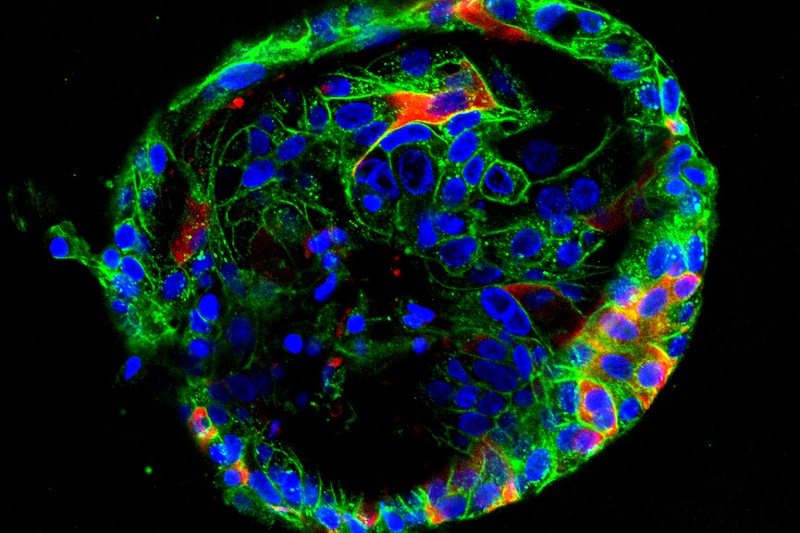每日外闻138
Breathed in
One of the key insights from organoids is what SARS-CoV-2 does to cells in the respiratory system (呼吸系统), from the upper airway to the lungs.
Kazuo Takayama, a stem-cell biologist at Kyoto University, Japan, and his colleagues have developed bronchial (支气管) organoids with four distinct cell types, made from frozen cells from the outer bronchial layer, or epithelium (上皮细胞). When his team infected the organoids with SARS-CoV-2, they found that the virus mainly targets stem cells that replenish (补充) cells in the epithelium known as basal (基础的) cells, but did not easily enter protective, secretory ‘club cells’2. The team, which posted its work on bioRxiv, now plans to study whether the virus can spread from basal cells to other cells.
From the upper airways(上呼吸道,气道), the virus can enter the lungs and cause respiratory failure(呼吸衰竭), a severe complication of COVID-19. Using mini lungs in a dish, Shuibing Chen, a stem-cell biologist at Weill Cornell Medicine in New York City, has shown that some cells die after being infected, and that the virus induces the production of proteins known as chemokines(趋化因子) and cytokines3, which can trigger a massive immune response. Many people with severe COVID-19 experience an immune reaction known as a cytokine storm, which can be deadly.
But Chen, who also posted her results on bioRxiv, says why lung cells are dying in patients remains a mystery — whether it’s because of damage caused by the virus, self-induced destruction, or through being gobbled up by immune cells(还不知道是细胞自己导致的死亡,还是由免疫细胞吞噬而死). “We know the cells die but we don’t know how,” says Chen, whose approach to creating organoids was different from Takayama’s. Instead of creating them from adult cells, she used pluripotent stem cells that can develop into any cell type in the body. Organoids grown in this way can include more cell types, but the final result is less mature and so might not represent adult tissue, says Chen, who is now growing lung organoids with immune cells.
See you tomorrow











